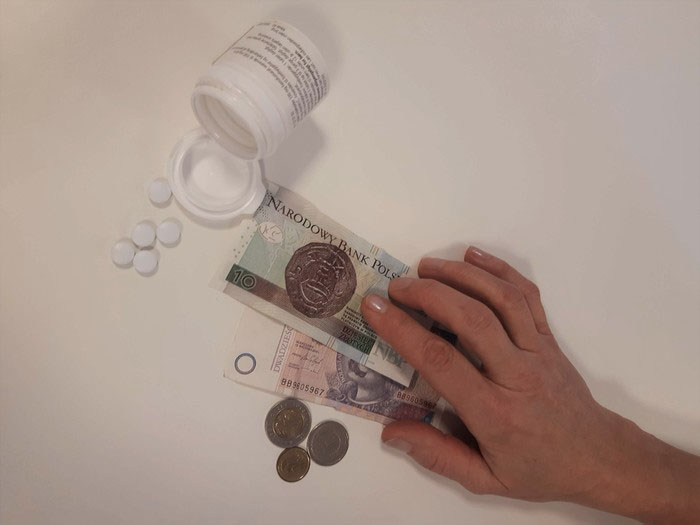On Thursday, I delivered testimony before the House Oversight and Accountability Subcommittee on National Security, the Border, and Foreign Affairs at a hearing titled “Accountable Assistance: Reviewing Controls to Prevent Mismanagement of Foreign Aid.” I argued that the financial flow of assistance dollars was already very closely tracked, and we had good evidence from situations including Ukraine and Afghanistan that little aid finance leaked as a result. But the extent of the oversight was enough to slow down aid delivery and make it less effective. What we needed to do was move toward a system of transparency in contracting and monitoring of results as a better way to deliver clean and effective development (see: my book Results Not Receipts).
I’m grateful to committee members for the opportunity to speak with them, even though I admit there was a lot said during the hearing that I found odd or confusing, including the idea that the International Migration Organization (a UN body with a budget of about 22 cents per person on the planet, overseen by a US citizen, and dedicated to making migration legal, safe, and successful), was responsible for the crisis at the US southern border; or that you couldn’t see who won contracts financed by multilateral organizations and the United Nations; or that “wokeness” had made the US less popular in aid recipient countries over the last few years.
Another thing that didn’t sound quite right was a statement made by Chairman Grothman in which he suggested “The World Bank estimates that 20 percent of foreign aid is lost to corruption each year.” That in particular piqued my interest, but also guilt. I used to work at the World Bank and used to try to estimate percentages of things lost to corruption. And that statistic rang a bell.
After the hearing I Googled “World Bank” and “20 percent of aid lost to corruption.” Nowadays, everyone’s search results are different, but for me, the top hit for that search is from a website called Gitnux in an article repeating the statistic (without a cite) by an author who studied Food Technology at the University of Trier before helping to set up Gitnux, where he was primarily responsible for developing SEO strategies and handling content marketing. (So: good at his job.)
When I went down the Google search results a little further I got to a paper titled “The credibility of corruption statistics: A critical review of ten global estimates.” It is an output of the incredibly useful U4 Anti-Corruption Resource Center, which focuses on the issue of aid and governance and takes the threat of corruption in aid very seriously. The report notes that the “20 to 40 (even) percent of aid lost to corruption” number is indeed widely cited (along with the midpoint of 30 percent), but if you go down the rabbit hole of sources, there is simply nothing to back it up. It is “an old and largely unsubstantiated statistic concerning a related but different matter.” In other words, a “zombie statistic.”
I’ve written before on wide-ranging, ill-cited, extremely high estimates of corruption in aid, including Senator Rand Paul’s “70 percent is stolen off the top.” I presented some more estimates yesterday. Suffice it to say we don’t and won’t ever have an exact estimate of something that is ill-defined and often well hidden, so any exact global number—or even range—should be treated with skepticism from the start. But what we do know is that aid often delivers fantastic outcomes at very low cost. In turn, that suggests first, that aid diversion isn’t significant enough to be stopping aid impact and, second, focusing on ‘were results delivered’ can be a great anti-corruption metric and tool.
But the reason I felt guilt as well as familiarity when I heard the Chairman’s statement was that I’ve seen the U4 report before. Because as well as debunking the “World Bank says 20 percent of aid lost to corruption” statistic, it also cites me, as a potential source of other zombie statistics about widespread corruption that doesn’t hold up to scrutiny (although not the 20 percent stat). In my defense… well, there isn’t too much of a defense. The cites are from papers I wrote when I was first trying to scope the scale of the challenge of corruption in infrastructure at the World Bank, and I should have been more careful with regard to bandying about ill-founded numbers. In particular, the U4 report notes one figure I used was “presented without citation or substantiation.” They are right. And I have to say at this point I don’t remember what the substantiation was, I can only hope it was reasonable, but I don’t believe the number, either. I am sincerely sorry for my part in the zombie statistic industry, and in an effort to atone, I’ll try to point out inflated aid-and-corruption numbers when I see them. Consider this a downpayment.
CGD blog posts reflect the views of the authors, drawing on prior research and experience in their areas of expertise.
CGD is a nonpartisan, independent organization and does not take institutional positions.







